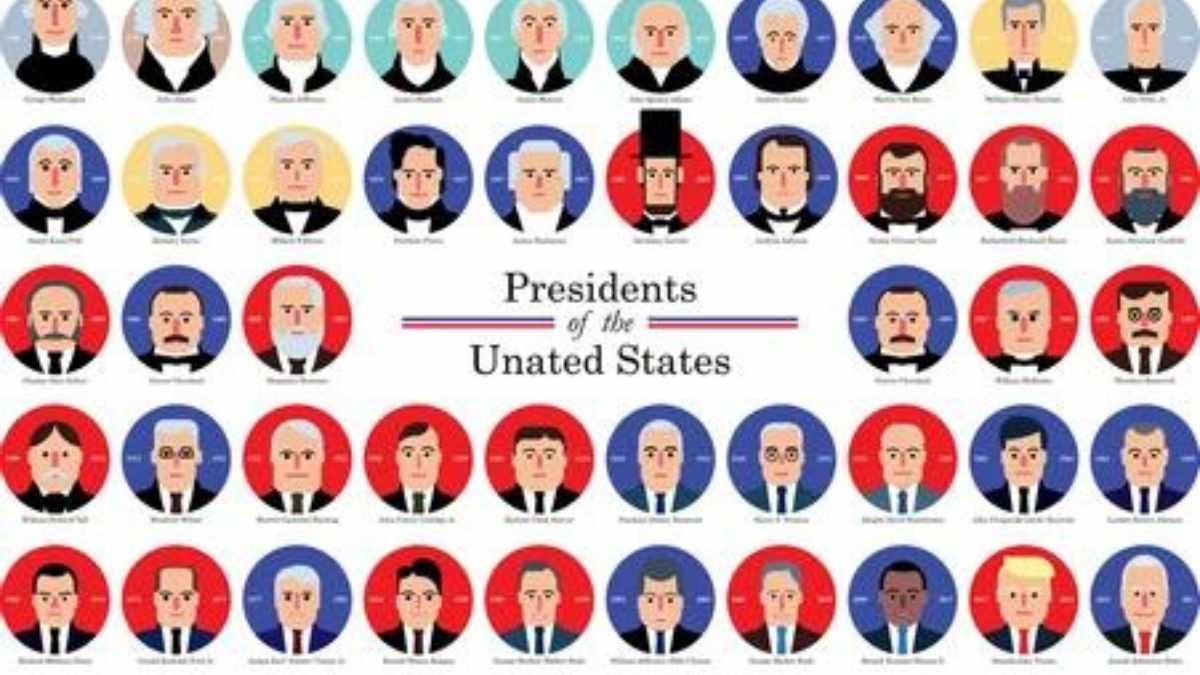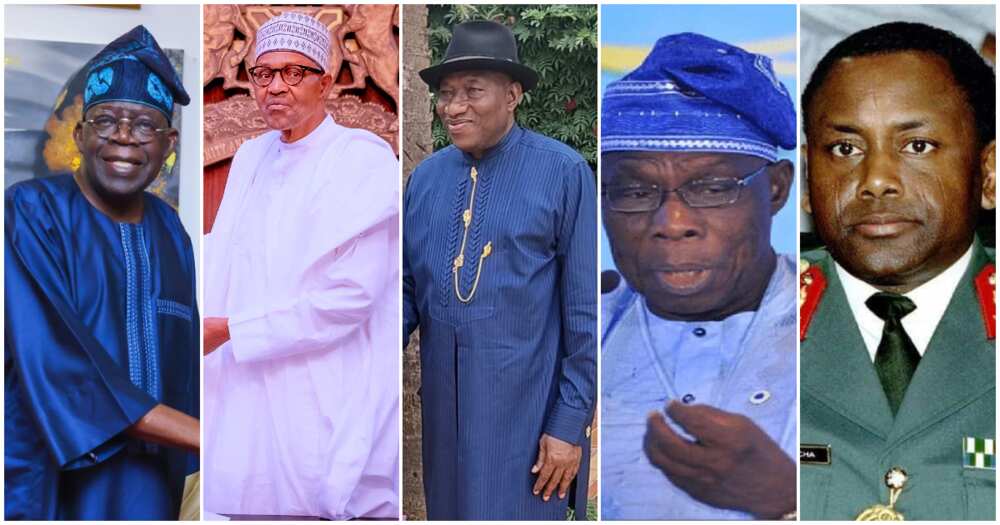
Meet American Presidents: An Epic Saga of Leadership and Legacy
0 Posted By Kaptain KushFrom George Washington to Joe Biden, the American presidency weaves a captivating narrative of leadership and influence. Each commander-in-chief, a distinct thread in the tapestry of history, has navigated challenges and triumphs, leaving an enduring mark on the nation’s course.
As George Washington led the fledgling nation, the seeds of democratic governance were sown. Subsequent presidents, from Abraham Lincoln‘s unyielding resolve to FDR’s New Deal, steered the country through times of crisis, shaping its identity and destiny.
From the heights of optimism to despair, they tackled wars, economic turmoil, civil rights, and global diplomacy. Each held the mantle of power, guiding the nation towards progress and confronting the complexities of their era.
- George Washington (1789-1797) – The first President of the United States, Washington set many precedents for the office. He oversaw the implementation of the Constitution and played a crucial role in shaping the young nation.
- John Adams (1797-1801) – The second President, Adams faced challenges with foreign policy, including the XYZ Affair and the Alien and Sedition Acts, which sparked controversy and political divisions.
- Thomas Jefferson (1801-1809) – As the third President, Jefferson is best known for the Louisiana Purchase, which doubled the size of the United States, and his advocacy for agrarianism and individual rights.
- James Madison (1809-1817) – During Madison’s presidency, the United States engaged in the War of 1812 with Britain, solidifying its independence and national identity.
- James Monroe (1817-1825) – Monroe’s presidency marked the “Era of Good Feelings,” a period of relative political unity and economic growth.
- John Quincy Adams (1825-1829) – Adams, the son of John Adams, faced political challenges during his term, including accusations of a “corrupt bargain” to win the presidency.
- Andrew Jackson (1829-1837) – A controversial figure, Jackson expanded presidential powers and championed policies such as Indian removal, leading to the infamous Trail of Tears.
- Martin Van Buren (1837-1841) – Van Buren grappled with the economic depression known as the Panic of 1837 during his presidency.
- William Henry Harrison (1841) – Harrison’s presidency was short-lived as he succumbed to pneumonia just 31 days after taking office, making him the shortest-serving president.
- John Tyler (1841-1845) – As the first vice president to assume the presidency due to the death of a president, Tyler set essential precedents for presidential succession.
- James K. Polk (1845-1849) – Polk’s presidency is noted for the expansion of the United States through the annexation of Texas and the acquisition of California and the Southwest following the Mexican-American War.
- Zachary Taylor (1849-1850) – Taylor’s presidency was marked by tensions over the issue of slavery, and he died in office after just 16 months.
- Millard Fillmore (1850-1853) – Fillmore assumed the presidency upon Taylor’s death and signed the Compromise of 1850, which temporarily eased tensions between free and slave states.
- Franklin Pierce (1853-1857) – Pierce’s presidency was marred by the Kansas-Nebraska Act and the increasing divide over slavery, which intensified regional tensions.
- James Buchanan (1857-1861) – Buchanan’s presidency witnessed the deepening crisis over slavery, culminating in the secession of Southern states and the onset of the Civil War.
- Abraham Lincoln (1861-1865) – Lincoln’s leadership during the Civil War, his Emancipation Proclamation, and his efforts to preserve the Union made him one of the most revered presidents in American history.
- Andrew Johnson (1865-1869) – Johnson faced significant challenges during Reconstruction, clashing with Congress over the rights of formerly enslaved individuals.
- Ulysses S. Grant (1869-1877) – Grant’s presidency was marked by Reconstruction efforts, economic challenges, and accomplishments such as the ratification of the 15th Amendment.
- Rutherford B. Hayes (1877-1881) – Hayes’s presidency began with the controversial Compromise of 1877, which ended Reconstruction and resulted in the withdrawal of federal troops from the South.
- James A. Garfield (1881) – Garfield’s presidency was tragically cut short when he was assassinated six months into his term.
- Chester A. Arthur (1881-1885) – Arthur, Garfield’s vice president, succeeded him and surprised many with his reformist agenda.
- Grover Cleveland (1885-1889, 1893-1897) – The only president to serve two non-consecutive terms, Cleveland is remembered for his commitment to fiscal conservatism and opposition to political corruption.
- Benjamin Harrison (1889-1893) – Harrison’s presidency saw the passage of the Sherman Antitrust Act and the admission of six states to the Union.
- William McKinley (1897-1901) – McKinley’s presidency was marked by economic prosperity and the Spanish-American War, which led to the acquisition of territories such as Puerto Rico and the Philippines.
- Theodore Roosevelt (1901-1909) – Roosevelt was a progressive leader who advocated for conservation, expanded the presidency’s powers, and pursued “trust-busting” policies.
- William Howard Taft (1909-1913) – Taft continued some of Roosevelt’s progressive policies but faced challenges from conservatives and progressives within his own party.
- Woodrow Wilson (1913-1921) – Wilson’s presidency included significant domestic reforms, such as the Federal Reserve Act and the League of Nations establishment after World War I.
- Warren G. Harding (1921-1923) – Harding’s presidency was marred by scandals, including the Teapot Dome scandal, which tarnished his legacy.
- Calvin Coolidge (1923-1929) – Coolidge’s presidency was characterized by economic prosperity and a commitment to limited government.
- Herbert Hoover (1929-1933) – Hoover’s presidency was defined by the Great Depression, and his efforts to address the economic crisis faced criticism and challenges.
- Franklin D. Roosevelt (1933-1945) – FDR’s leadership during the Great Depression and World War II reshaped the federal government’s role and earned him a place as one of America’s greatest presidents.
- Harry S. Truman (1945-1953) – Truman assumed the presidency after FDR’s death and made crucial decisions, including dropping atomic bombs on Japan during World War II.
- Dwight D. Eisenhower (1953-1961) – As a military hero from World War II, Eisenhower’s presidency was marked by a focus on infrastructure and civil rights.
- John F. Kennedy (1961-1963) – Kennedy’s presidency was cut short by assassination but was characterized by the Cuban Missile Crisis and the beginning of the civil rights movement.
- Lyndon B. Johnson (1963-1969) – Johnson signed landmark civil rights legislation and launched the Great Society programs, but his presidency was also overshadowed by the Vietnam War.
- Richard Nixon (1969-1974) – Nixon’s presidency was marked by achievements in foreign policy, such as the opening of relations with China, but ended in the Watergate scandal and his resignation.
- Gerald Ford (1974-1977) – Ford, Nixon’s vice president, became president after Nixon’s resignation and faced challenges in healing the nation after Watergate.
- Jimmy Carter (1977-1981) – Carter’s presidency saw domestic and foreign policy challenges, including the Iran hostage crisis and economic struggles.
- Ronald Reagan (1981-1989) – Reagan’s presidency was characterized by conservative policies, tax cuts, and a strong stance against communism.
- George H. W. Bush (1989-1993) – Bush’s presidency ended the Cold War and the first Gulf War against Iraq.
- Bill Clinton (1993-2001) – Clinton’s presidency was marked by economic growth and welfare reform, but he also faced controversy over personal scandals.
- George W. Bush (2001-2009) – Bush’s presidency was defined by the September 11, 2001, terrorist attacks and the subsequent “War on Terror.”
- Barack Obama (2009-2017) – Obama‘s presidency included significant reforms such as the Affordable Care Act and efforts to address climate change.
- Donald Trump (2017-2021) – Trump‘s presidency was marked by controversial policies on immigration, trade, and international relations.
- Joe Biden (2021-present) – Biden assumed the presidency in January 2021, facing challenges such as the COVID-19 pandemic and economic recovery.


